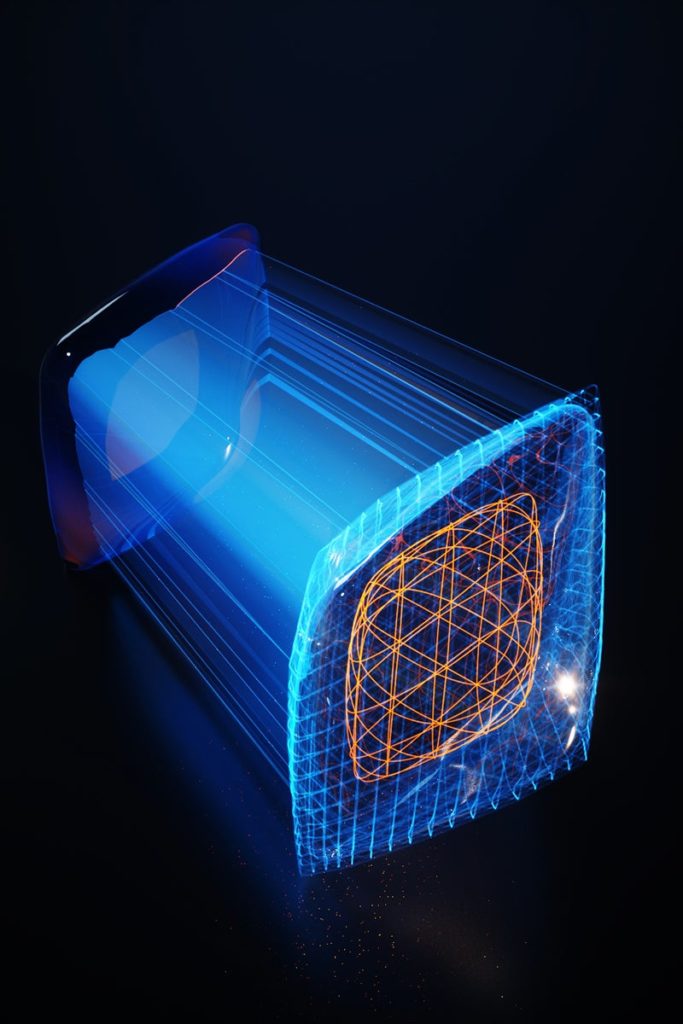Today’s rechargeable batteries are a wonder, but far from perfect. Eventually, they all wear out, requiring expensive replacements and recycling.
A complex and fruitful collaboration between researchers at the Molecular Foundry’s National Center for Electron Microscopy, the Advanced Light Source, and Stanford along with several other research institutions seeks to understand the mechanism behind this process, paving the way for the next generation of rechargeable batteries. This work has resulted in two recent publications, the first in Materials Today and the second in Nature Materials.
The team of Foundry staff and users used correlative imaging and artificial intelligence to analyze new kinds of atomic-scale microscopic images to understand exactly why batteries wear out. Eventually, they say, the revelations could lead to batteries that last much longer than today’s. Specifically, they looked at a particular type of lithium-ion batteries based on so-called LFP materials (LixFePO4), which could lead to mass-market electric vehicles because it does not rely on chemicals with constrained supply chains.

Nanofractures
“Think of a battery as a ceramic coffee cup that expands and contracts when it heats up and cools off. Those changes eventually lead to flaws in the ceramic,” William Chueh explained. “The materials in a rechargeable battery do the same each time you recharge it and then use up that electricity, leading to failure.” Chueh is a Foundry user and an associate professor of materials science and engineering at Stanford University.
Inside a battery, it is not temperature that causes the fissures, but the mechanical strain the materials have on one another with each charge cycle.
Scientists don’t know much about what’s happening at the nanoscale where atoms bond, but new high-resolution microscopy techniques allow researchers to see it and AI helps them understand what is happening. For the first time, they can visualize and measure these forces at the single nanometer scale.
The performance of any given material is a function of both its chemistry and the physical interaction in the material at the atomistic scale. What’s more, the smaller things get and the more diverse the atoms making up the material are, the harder it is to predict how the material will behave. Enter AI.
A transformative tool
Using AI for image analysis is not new, but using it to study atomic interactions at the smallest of scales is. In medicine, artificial intelligence has become a transformative tool in analyzing images of everything from faulty knees to deadly cancers. Meanwhile, in materials science, new methods of high-resolution X-ray, electron and neutron microscopy are allowing direct visualization at the nanoscale.
For their subject, the team chose lithium iron phosphate or “LFP,” a well-known material used in positive electrodes that is gaining popularity with electric car makers and other battery-intensive businesses. This electrode does not contain cobalt and nickel, which are used in many commercially available batteries. LFP batteries are also safer, though they hold less electricity per pound.
Though LFP has been studied for two decades, two key outstanding technical questions could only be guessed at until now. The first involves understanding the elasticity and deformation of the material as it charges and discharges. The second pertains to how it expands and contracts in a specific regime where the LFP is partially stable, or “metastable.”
Deng helped explain both for the first time using his image-learning techniques, which he applied to a series of two-dimensional images produced by a scanning transmission electron microscope, and to advanced (spectro-ptychography) X-ray images. The findings, he said, are important to a battery’s capacity, energy retention and rate. Better yet, he thinks it is generalizable to most crystalline materials that might also make good electrodes.
“AI can help us understand these physical relationships that are key to predicting how a new battery will perform, how dependable it will be in real-world use and how the material degrades over time,” Deng said.
Interested in Becoming a Foundry User?
Join our collaborative, multidisciplinary environment.
Learn more >
Next up, the researchers say they are already at work to bring their techniques to elucidate promising new battery designs at the atomic level. One outcome might be new battery control software that manages charging and discharging in ways that can improve battery life. Another exciting avenue is the development of more accurate computational models that allow battery engineers to explore alternative electrode materials on a computer instead of in a lab.
This research was supported by the Toyota Research Institute. Additional support was provided by the U.S. Department of Energy, Lawrence Berkeley National Laboratory, SLAC National Accelerator Laboratory and the National Science Foundation.
This article has been adapted from an existing press release.

